Foreign Insulators
Reprinted from "Crown Jewels of the Wire", December 2002, page 3
From Marilyn Albers. . .
For the past 23 years I have had the opportunity to share my love of
insulators (especially the foreign ones) with collectors throughout the world by
serving as the foreign insulator editor of "Crown Jewels of the Wire"
magazine. This has been a real privilege and I want to thank the editors for
allowing me the forum to promote foreign insulators, and of course the many
contributors who have sent me specimens from various countries, including data
such as the embossing, country of origin, etc. Without this information, there
would have been little to write about.
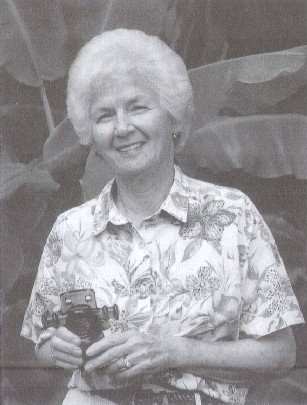
With the above having been said, my
husband Bill and I feel it is time for a break from the deadlines of regular
articles. Being a septuagenarian with six grown children and their families,
including twenty grandchildren, I would like to spend more time with them and
enjoy their growing up time. This doesn't mean that I am retiring from the
hobby, because I am still adding new pieces to my collection and will invite any
offers of new finds. If you have a foreign insulator that you feel may need a CD
number, please send it to N.R. Woodward or to me, and I will see that he has the
opportunity to record the information in his files and, if applicable, assign a
CD number.
I believe that there are a number of collectors in the hobby who
would enjoy having the opportunity to be the Foreign Insulator Editor. You don't
need to be an author to qualify! As of January 2003, the job is open and I request that you contact the new editor of Crown Jewels of the Wire magazine
to apply. I am confident that your applications will be well received.
In
closing, I am not riding off into the sunset, I am just unloading a few
responsibilities so that I may continue to add quality to my life.
Love and many thanks to all of our Crown Jewels of the Wire readers :-))
Marilyn
TEKNISKA MUSEET
"Some of us foreign collectors go to strange places."
by Gene
Calman
I thought it might be of interest to the readers to share some of the photos
I got at the Tekniska Museet -- the Museum of Science and Technology in Stockholm,
Sweden which opened to the public in 1936. It museums are incorporated into
buildings that were part of an early 1670's drill grounds of the Life Guards,
the cavalry regiment K2. Between 1971 and 1975, the northern stables were
converted to house the Telecommunications Museum.
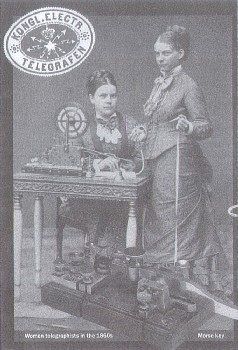
The first electrical telegraph line was opened in 1853 between Stockholm and
Uppsala. The same year saw the establishment of the Royal Electrical Telegraph
Administration which became n not without opposition -- the first State
enterprise to open its doors to female staff. In 1864, the first course for
telegraphists took place. 23 women were trained and appointed as temporary
assistants. The women received a monthly salary of 50 "Riksdaler" as
opposed to the 75 paid to their male colleagues.
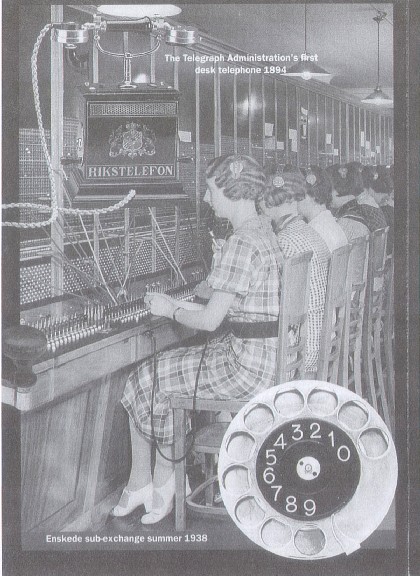
In the first telephone exchanges, telephonists were responsible for
connecting the calls. During the 1920's, the telephone network was converted to
automatic working. The first automatic station with a 500-line selector system
was opened in Stockholm in 1924. The first major coordinate selector system for
3,500 subscribers was opened in Sundsvall two years later. To allow subscribers
to connect their own calls, the telephones were fitted with dials. The
conversion process ended in 1972 with the station in Arjeplog.
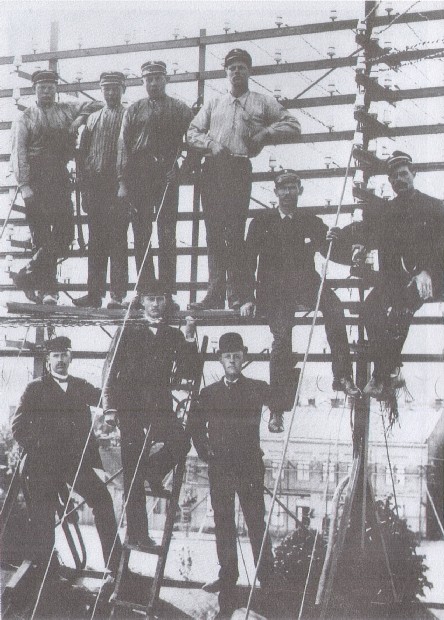
The crew and "management" c. 1890.
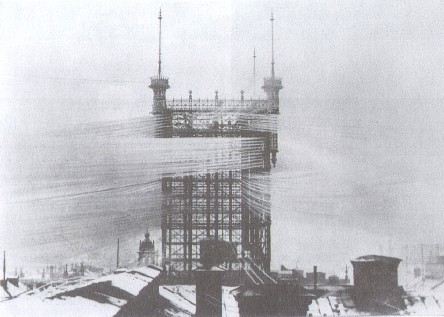
Early Stockholm lines

Lineman, c. 1953
The insulators on the following page are in a small museum in Kirkenes.
Norway. I had taken the coast ship up from Bergen around North Cape to the
Russian border and then by bus to Murmansk, Russia.
"Some of us foreign collectors go to strange places!"
|
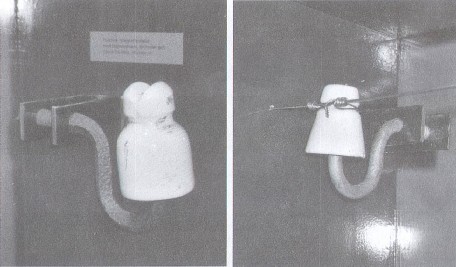
|
|
Although it is hard to tell for sure what the mark is on the ear of the white
porcelain above, it looks like it might be Russian in origin. The glass piece
below definitely looks like it came from the U.S.S.R.
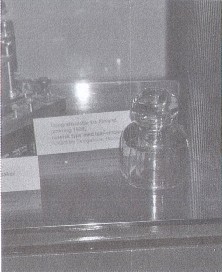
|
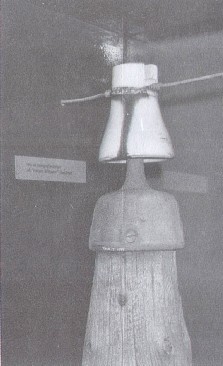
Above are two white porcelain insulators from Norway. |
| 